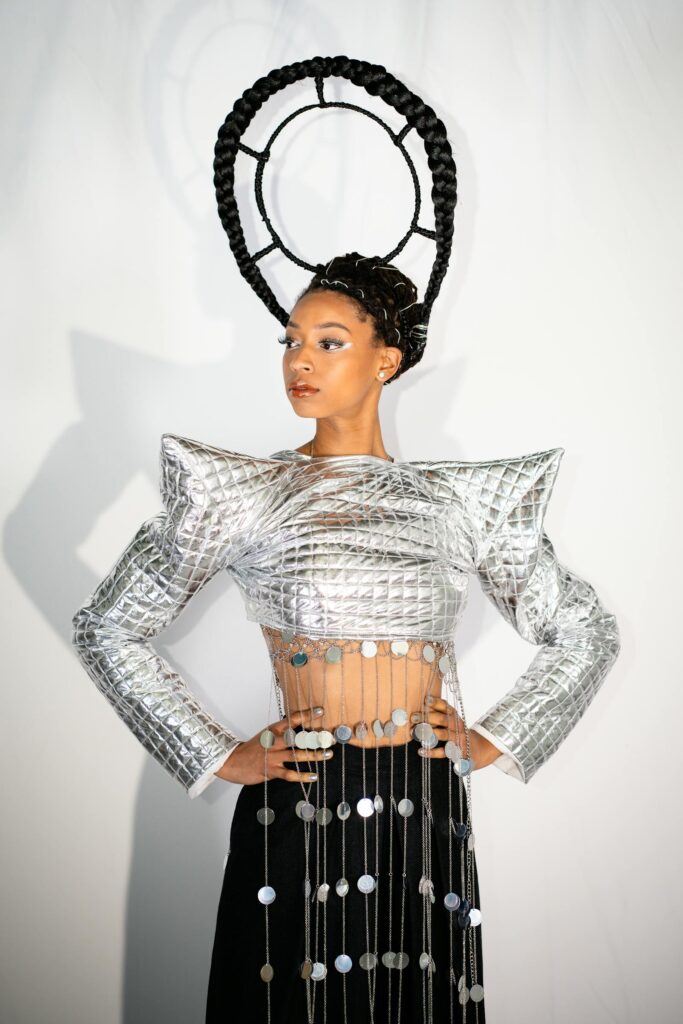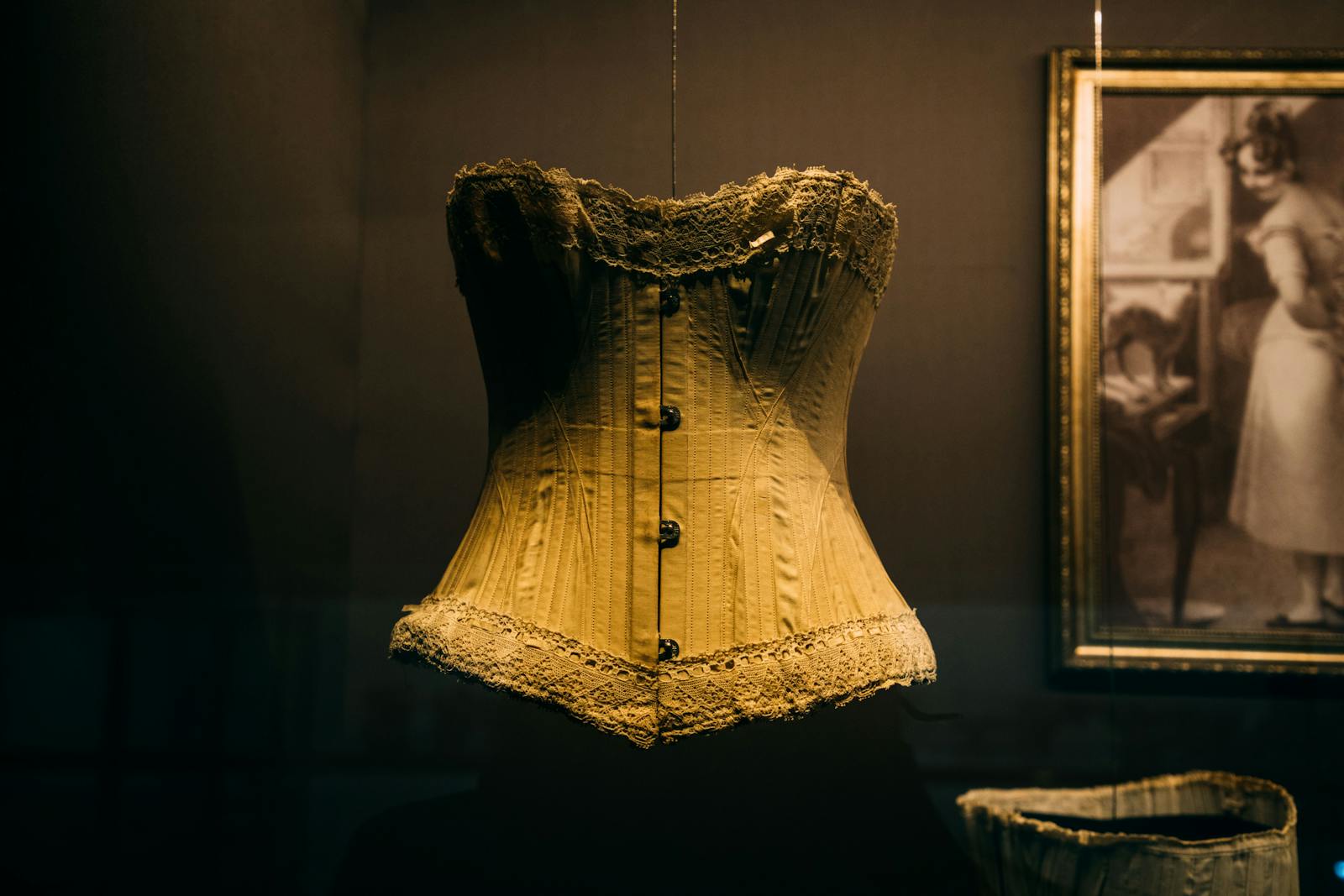Since the 16th century, fashion has dramatically evolved in the UK, from gowns to oversized clothing. Today, many different designer brands have distinct styles and flares. Fashion has taken the world by storm and continues to evolve and reshape itself. Trends typically last between a decade and a century because society is influenced by those created by celebrities or people of higher status. Fashion also changes over time to reflect changes in society and culture.
Royals and Ruffles
In the 16th century, fashion was mainly influenced by the key people in the Royal Tudor Court—for Example, Prince Arthur, Henry VIII and his wives and children, especially Catherine of Aragon. Women in the 16th century would show their status through their silhouette, headdresses and highly-embellished outer layers. Catherine of Aragon brought in Spanish farthingale, a conical undergarment that gave structure to the women’s skirt. The skirts were made of exquisite fabric with precious jewels, ribbons and lace. Wealthy men wore white silk shirts and frills around the neck and wrist. Also, heavily starched pleated ruffs were fashionable throughout the period.
Now, we move on to the 17th century. At the beginning of the 17th century, the fashion trend continued in the 16th century. By the 1620s, fashion had started to change. The garments stayed the same, like the doublets and the long gowns, but they wanted their clothing to be comfortable to allow them to move quickly. So, the waistlines on the twos and women’s bodies were higher, and the padding was removed. The ruffs and whisks around their neck were replaced with much softer and more comfortable standing bands. Women’s sleeves rise, showing the wrist and the forearm. Men’s breeches are slimmer and more accessible to move in. Overall, this century was a time of comfortability, softness and elegance.
After the 17th century, it was the 18th century, the time of iconic fashion trends. In the 18th century, wigs were fashionable; men cut their hair short and wore a wig. The breeches were tighter than the top of the trousers and came below the knee. The shirts were loose and wide-fitting with lace ruffles. Men wore a cravat over the neck of the shirt. The cravat became popular in the mid-1730s. At the beginning of the century, the waistcoats were long and usually worn under the coat, so the sleeves and back were never seen. But then the coat and waistcoat became shorter and tighter, fitting around the mid-century. The dress for women in the 18th century was elegant. The skirts were full, and the bodices were low. Often, the dresses were elaborate, and the gown had a split in the skirt to allow the dress to show.
19th century
The fashion in the 19th century reflected the changes of the period and encompassed a wide range of styles. Queen Victoria influenced fashion in the 19th century. She liked modest styles with a slim waist and minimalistic design. Victorian fashion for women was designed to emphasise tiny waists, using tightly laced corsets. The dress’s neckline is called the Bertha, a low-shoulder neckline that exposes a woman’s shoulders. Bertha was only worn by wealthy middle-class women because lower-class women were prohibited from showing as much skin. At the beginning of the period, the artificial hourglass silhouette was fashionable. Towards the end of the 19th century, women’s clothing became slightly less tight, allowing them to do sports like tennis and cycling. Around 1856, the crinoline was introduced and replaced the heavy petticoats. These are hooped skirts or cage-like structures worn underneath the skirts. Hats were often elaborately decorated with satin flowers, ribbons, bows, and feathers. The most popular type of hat was bonnets. Bonnets were usually made from straw and silk. As the century progressed, leather became fashionable. The new leather shoes had a narrow, pointed toe. In the 19th century, men’s fashion was influenced by Queen Victoria’s husband, Prince Albert. In the 1840s, men wore calf-length, tight-fitting frock coats under which they wore a linen shirt and a single or double-breasted vest or a waistcoat. Men’s shoes were leather boots of varying lengths and heel heights.

20th century: Best era
During the 20th century, fashion had evolved from modest and restrictive to free and loose. In the 1900s, fashion remained similar to that of the 18th century. However, in the 1920s, fewer corsets were worn due to WWI and women doing more jobs. In the 1930s, the flapper dress with a dropped waistline and rising hemline became famous because of Coco Chanel. In the 1940s, Hollywood came to place, and evening gowns with cut silk and low backs were trendy to many Hollywood stars. Since WW2 arrived in the 1940s, military uniforms have been worn in most fashion. In the UK, famous fashion designers like Norman Hartnell were bought to design these utility garments. Dior brought in ‘New Look’, which took the world by storm. Also, fun and quirky patterns came into place. Pencil skirts became trendy. The late 1960s was about bright, swirling colours, psychedelic, tie-dye shirts, long hair, and beards. Polyester and bright colours were everywhere. Men and women were wearing very tight-fitting clothing and platform shoes. By 1973, most women were wearing high-cut boots and low-cut pants. Blocky shapes were everywhere, and velvet was popular. Bright-coloured accessories like sunglasses, bangles and hoop earrings were very trendy. Teased hair, loud makeup and neon were essential to this era. The hip-hop culture influenced the 1990s, so there were a lot of baggy jeans, oversized t-shirts, and brand sportswear normally accessorised with gold chains and snapback hats.
Modern Day: Individuality Rules
Finally, let’s move on to the modern day, the 21st century. The 2000s were about experimenting with different styles and finding unique ways to express personal fashion. Low-rise jeans were a massive craze; everyone wore them, including Brittany Spears, and they were often paired with a crop top. Juicy Couture made velour tracksuits popular, and graphic tees and T-shirts with logos/slogans were trendy. Cargo pants, Uggs boots and layering different pieces of clothing was an everyday look. In the 2010s, popular fashion trends included athletic wear like leggings, sports bras, and trainers, worn in everyday outfits. Skinny jeans and high-waisted jeans and skirts were popular. Styles from the 70s, 80s and 90s made a comeback, including mom jeans, chokers and oversized denim jackets. Adidas and Nike were very popular with their trainers. Also, floral prints, animal prints and geometric patterns were widely popular. Nowadays, fashion is very different, and everyone has unique styles. Face masks have become popular due to COVID-19 but are now seen as fashionable.
By Nene
Winchmore School Newsroom

Hello!
Good cheer to all on this beautiful day!!!!!
Good luck 🙂